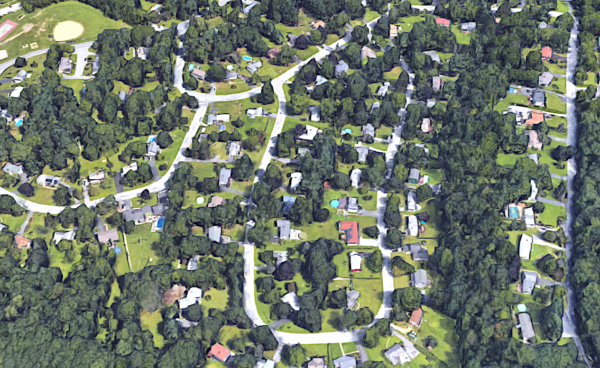Dutchess housing needs through 2040 studied
Dutchess County has prepared a new Housing Needs Assessment that analyzes what has happened in recent years in the county and projects what will be needed in the way of affordable housing for the next 20 years. The last time the county did a complete housing needs assessment was in 2008.
Among the trends that have contributed to the current housing situation are the leveling off of population growth while the median age in Dutchess County continues to rise. The study suggested that as many older residents choose to age in place, the number of homes available for younger families looking to buy into the housing market tightens.

The study also found that average household size continues to decline, leading to the creation of more households that are smaller in size.
“Income growth has lagged behind housing costs, particularly for many renters and lower-income households, resulting in more cost-burdened households,” the study said. It found that as more households with higher incomes are taking up residency in Dutchess, there is price pressure that affects the lower end of the market.
The study said that more than 15,000 housing units have been added to the county”™s inventory during the past 20 years. More of them have been single-family homes. It found that vacancies at larger apartment developments in the county during 2020 and 2021 dropped below 1%.
“Lagging renter incomes have meant a substantial rise in the share of renters that spend more than 30% of their monthly incomes on housing ”¦ 52% of renters are now in that position. Renter households earning $35,000 to $50,000 have experienced the sharpest change. with 71% now cost-burdened compared with just 10% in 2000.”

The study concluded that renters earning less than $50,000 a year should be the focus of creating additional housing stock. It noted that at about the time Covid started having an impact, the county was facing an historically low inventory of homes for purchase, a general increase in demand for single-family homes and a specific increase in the number of millennial households in the county.
“Whatever has been going on in the Dutchess housing market in recent decades, the reality in 2022 is that thousands of households struggle to afford their housing costs,” the study said.
In looking to the future, three different scenarios were reviewed. Two of the three concluded that Dutchess would show a net decline in the number of households it had from 1.5% to 7.5% by the year 2040. One of the scenarios suggested there would be 3% growth in the number of households by 2040.
“Keeping up with emerging housing needs year after year will be less demanding if Dutchess County continues to grow slowly,” the study said. It concluded that a Dutchess County Housing Trust Fund with at least $2 million per year put into the hopper could fund a large range of activities to help create enough affordable housing to meet projected needs.
The assessment suggested that potential uses of trust fund resources could be used to:
- Offset the costs of new or upgraded infrastructure, such as water and sewer, to ensure the viability of mixed-income housing developments;
- Support land acquisition in cases where site control is a critical issue;
- Serve as a flexible form of subsidy to new construction or rehabilitation projects that meet certain inclusionary conditions;
- Serve as a source of funding for affordable housing programs spearheaded by local jurisdictions or not-for-profit agencies;
- Support the preparation of generic environmental impact statements to facilitate timely development.
The assessment also suggested that municipalities should adopt zoning that encourages land use that allows for a broader array of housing options. It also suggested that municipalities could require that a portion of all new developments be priced as affordable housing.
Dutchess County Executive Marc Molinaro said, “This Housing Needs Assessment is our catalyst for change, presenting data, trends and goals both the county and localities must use to help eliminate the gaps between what we currently have in housing and what people can afford. Having a safe and affordable home is the basic foundation of a community and cornerstone for a family. Housing accessibility is a critical need and we will work aggressively to create more workforce housing and opportunity for our residents.”
Anne Saylor, the county”™s deputy commissioner of housing, said, “This report is the first step in a larger conversation we must have as a community about how we want Dutchess County to look in 2040, and what role housing plays in that vision. While the public is often concerned about the impact of new housing on their community, it is important to realize that failing to create a wider diversity of housing is already changing our community. Looking ahead, the Planning Department is taking an active role in supporting these conversations at both the county and municipal level to aid in the development and implementation of policies that work best for each of our unique communities.”
Mary Linge, director of real estate development for Hudson River Housing, a nonprofit that has worked to end homelessness and encourage affordable housing in the county, said, “Taking this fresh look at what has factored into housing affordability challenges locally across Dutchess is key to understanding how best to effect change moving forward. Being able to take this countywide analysis and focus on a variety of productive solutions for both our urban and rural communities will mean that affordability can be addressed more broadly and equitably.”